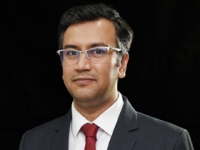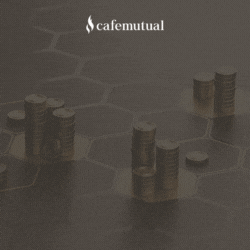Pharma is considered a defensive sector. Currently, we are amidst a bull phase; what is your rationale behind launching a pharma fund now?
Pharma has been a defensive sector due to it being a hedge against rupee depreciation and pharma products being similar to consumer staples in their consumption patterns. Though the lead indices NIFTY & SENSEX might indicate that this is a bull market, the broader market, barring a handful of Index heavyweights, has been rather sluggish over the last year and a half. We feel the market could see some more volatility over the next six months given the liquidity crunch and global uncertainties and so pharma should be looked at as a defensive play to tide over this volatility.
Having said that, the sector has underperformed in the last 2-3 years and most stocks have corrected over 50% from their peaks. They are available at very attractive valuations. If you look at P/E multiples, you will find the sector at a marginal discount to its 10-year average multiple but this is due to depressed earnings which inflates the P/E ratio. It is price-to-book ratio which will give you a truer picture of the sector’s attractiveness. The S&P BSE Healthcare index is currently at 2.6x P/B compared to its 10 year average of 3.5x and peak of 5.2x. This risk-reward pay-off is favourable right now.
The last 2-3 years have been rough for the pharma sector. What has changed in terms of the sector’s outlook?
The sector has struggled largely due to 2 reasons. First, there was a consolidation of drug purchasers in the US, which is the largest export market for India. This led to massive pricing pressure for pharma companies. Second, many plants in India faced regulatory and compliance issues from the USFDA, which lead to delay in product approvals. However, we see that off late business commentary from most pharma companies is changing. The price decline in the US is stabilizing and many Indian players are benefitting as some of the global generic players are exiting products with low margins. On the compliance side, most of the plant issues have been resolved. We believe that export sales, which were declining for industry, would turnaround and industry would witness growth in high single digit for the next few years.
What are the key trends influencing the export sector?
One of the key trends has been of ‘Genericiation’. Simply stated, governments and insurance companies across most global markets are moving towards generic drugs from branded drugs to lower the overall healthcare cost for the economy. For example, in US, more than 90% of prescriptions today are for generics which used to be around 60% in 2005. India pharma companies are leaders in the generic space supplying over 20% of world’s generic demand by volumes and they will be the main beneficiaries of the global market moving to generics. Another key trend is the increase in complex and specialty drugs like injectables, opthalmics, inhalation products, biosimilars etc in the generic pie. Over the last 8 years, Indian pharma companies have consistently increased R&D intensity for addressing such opportunities and today many of them are well geared to launch these products for the developed markets. Last but not the least, third key trend which is gaining good traction is increasing opportunity for CRAMs - contract research and manufacturing players based on out of India. India offers great value add for R&D outsourcing by Global pharma companies and we expect companies in these segment to do well over the next 5 years.
What investment opportunities do you see in the domestic pharma and healthcare space?
We expect the domestic pharma market to do much better than the export pie. In fact, in our current diversified portfolios we own stocks which are more domestic focused and insulated from external shocks. Indian spends a fraction of what other Emerging market nations do on healthcare. Even our government spends just 1.2% of GDP on healthcare compared to a global average of 10%. As income levels increase in the country, as more people have access to health insurance, as government spending on healthcare increases, the overall pharma & healthcare market will grow in the country. Today, we have 20% of population, around 28 crore people who need more medical attention i.e population over 50 years, and children below 5 years. By 2030, this population would more than grow close to 48 crore people forming 30% of the population then. We expect domestic pharma market to grow at 10-12% CAGR till 2030.
Along with pharma, the scheme will invest in a mix of wellness, healthcare services and specialty chemicals. Please specify the opportunities in the allied sectors and share an example or two.
These sectors provide great opportunities as they are growing faster than the pharma industry and provide a certain level of diversification to the portfolio. If you look at the hospital and diagnostic industry for example, there’s a shift from stand-alone centres to more organized chain of hospitals and diagnostic centres. The overall industry is growing at 12-15% CAGR and the shift to organized is adding further to the growth profile. In the specialty chemical space, where companies provide inputs to the pharma industry, China has been a leader. However, due to environmental concerns in China, we can see that many Indian players are benefiting in that space and we think it would again be a good addition to the overall portfolio.
How will you structure the scheme’s portfolio?
The fund will invest in opportunities across pharma, healthcare, wellness and speciality chemicals. We will look to invest about 50%-70% in Indian pharma while the rest will be across these diverse allied opportunities. We will also look to have some exposure to international pharma stocks. We will look to build a focused portfolio of 22-25 stocks with a large and midcap bias.
With a focussed portfolio of 20-25 stocks, wouldn’t there be concentration risk? How do you plan to mitigate this risk?
At the outset, this is thematic fund and is a high-risk high-return product and investor should understand the associated risk while investing in such a product. We plan to build a portfolio, which would include domestic focussed companies apart from export-oriented business and also have diversification in terms of including hospitals, diagnostic chains, specialty chemical business and also have international pharma. This would mitigate the concentration risk to a large extent.
Your fund has the option to take international exposure; which global investment ideas are on your radar?
In international equities, we want to invest in businesses which are not currently available in India. For example, we don’t have any large medical equipment and devices manufacturer listed in India or we hardly have any pure play biosimilar or innovator companies out of India. We think this proposition would add value to the overall portfolio construct as these businesses are prospering globally and Indian investors can benefit from the same.
Typically, retail investors tend to invest in diversified funds over sectoral fund. From personal finance point of view, why should advisors recommend this fund to their clients?
A thematic fund is more of a tactical play than a strategic one. This fund is better suited for someone who already has a diversified portfolio and is looking at the sector because it is available at attractive valuations and could generate better risk adjusted returns. If you look at the 10-year history, healthcare index has outperformed the broader market and we would think given the attractive valuations and turnaround in export outlook, it would make immense sense to look at such a sectoral fund today.
What is the ideal holding period for investors investing in the fund?
Being a thematic fund, we would advise investors to come in with a horizon of at least 3-5 years.





